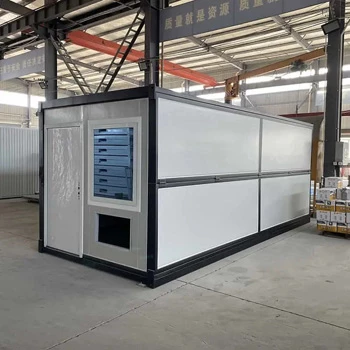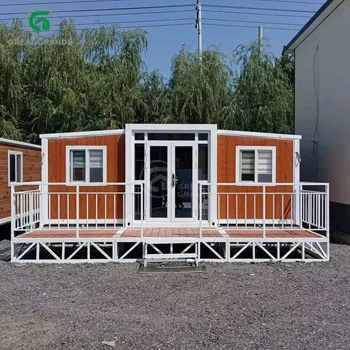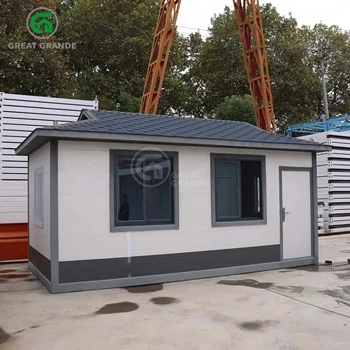Da der Bedarf an anpassungsfähigen und zuverlässigen Wohnlösungen, insbesondere in kälteren Klimazonen, stetig wächst, ist die Wahl eines vorgefertigten Containerhauses mit robuster Wärmedämmung, Energieeffizienz und struktureller Sicherheit wichtiger denn je. Ob Notunterkünfte, Arbeiterwohnheime oder mobile Büros – das Verständnis der wichtigsten Faktoren für die Wintertauglichkeit hilft Ihnen, eine fundierte Entscheidung zu treffen. Hier sind die wichtigsten Merkmale, auf die Sie beim Kauf eines winterfesten, vorgefertigten, faltbaren Containerhauses achten sollten: Isolierung, Heizsysteme, Feuchtigkeitskontrolle, Belüftung und allgemeine Haltbarkeit.
Wärmedämmung und Hitzebeständigkeit
In kälteren Regionen ist die Fähigkeit eines Fertigcontainerhauses, Wärme zu speichern und Wärmeverluste zu verhindern, von größter Bedeutung. Die Isolierung sorgt nicht nur für einen komfortablen Wohn- oder Arbeitsraum, sondern wirkt sich auch erheblich auf den Energieverbrauch aus.
Der Grande Fertighaus zum Zusammenklappen ist mit 75 mm dicken EPS-Sandwichplatten ausgestattet, die im Vergleich zu den dünneren 50 mm starken Platten der Konkurrenz eine bessere Isolierung bieten. Diese Platten reduzieren effektiv Wärmeverluste und sorgen für eine stabile Innentemperatur. Die Kombination aus Metall, Steinwolle und feuerfester Platte in der Sandwichstruktur hält die Innentemperatur in den heißen Monaten 18 °C kühler und im Winter stabiler. Bei Feldtests in extremen Klimazonen wie Afrika und dem Nahen Osten blieben die Innentemperaturen selbst bei großer Hitze angenehm.
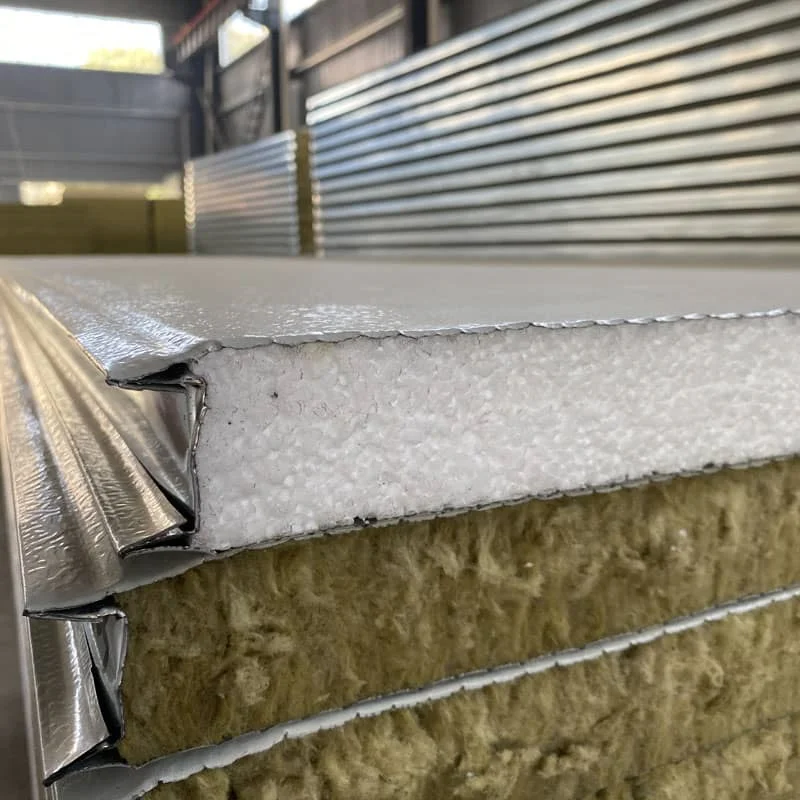
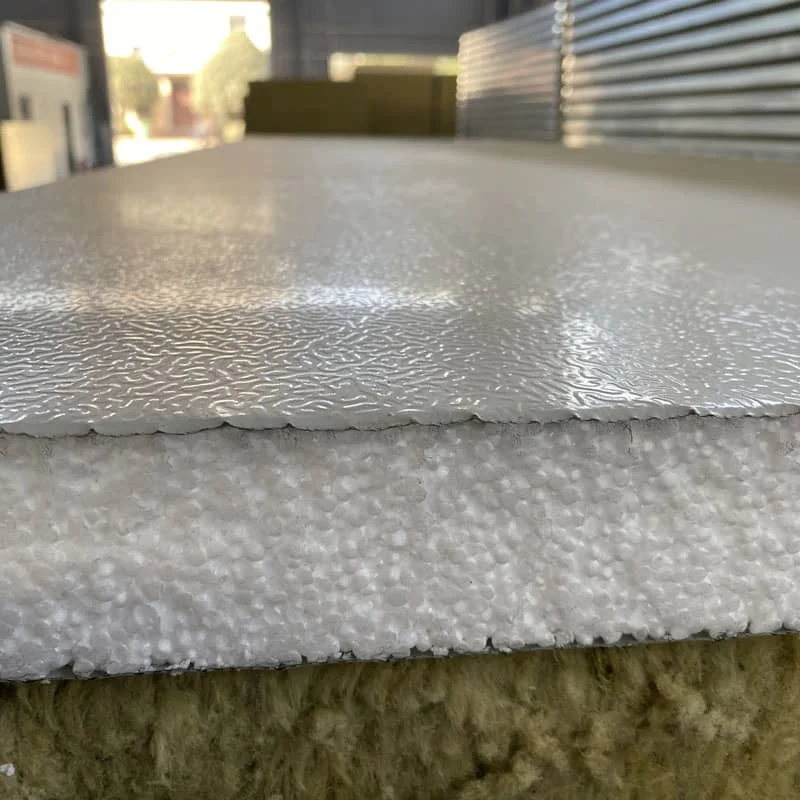
Im Winter spielt die Wärmeeffizienz der Wände eine entscheidende Rolle bei der Vermeidung übermäßiger Heizkosten. Der EPS-Kern und der verzinkte Stahlrahmen des Falthauses Grande sorgen für eine hervorragende Wärmespeicherung und reduzieren so den Bedarf an Dauerheizungen in Regionen mit milden Wintern.
Heizsysteme und Energieverbrauch
Die Wahl eines Fertighauses mit einem zuverlässigen und effizienten Heizsystem ist für den Komfort im Winter unerlässlich. Während die Grande Fertighaus zum Zusammenklappen Obwohl das Haus nicht über eine integrierte Zentralheizung verfügt, kann es dank seiner hervorragenden Dämmeigenschaften den Heizbedarf drastisch reduzieren. Effiziente Heizgeräte, Heizkörper oder sogar solarbetriebene Heizsysteme lassen sich jedoch problemlos integrieren und passen sich optimal an die Bauweise des Hauses an.
Um die Energieeffizienz weiter zu steigern, können Sie Solarmodule in Betracht ziehen. Das Falthaus Grande kann diese Module integrieren und erzeugt so jährlich rund 3000 kWh Strom. Das reduziert Ihren CO2-Fußabdruck und Ihre Energiekosten deutlich. In Regionen mit langen und harten Wintern ist dies eine hervorragende langfristige Investition, die für kontinuierliche Wärme und Energieeinsparungen sorgt.
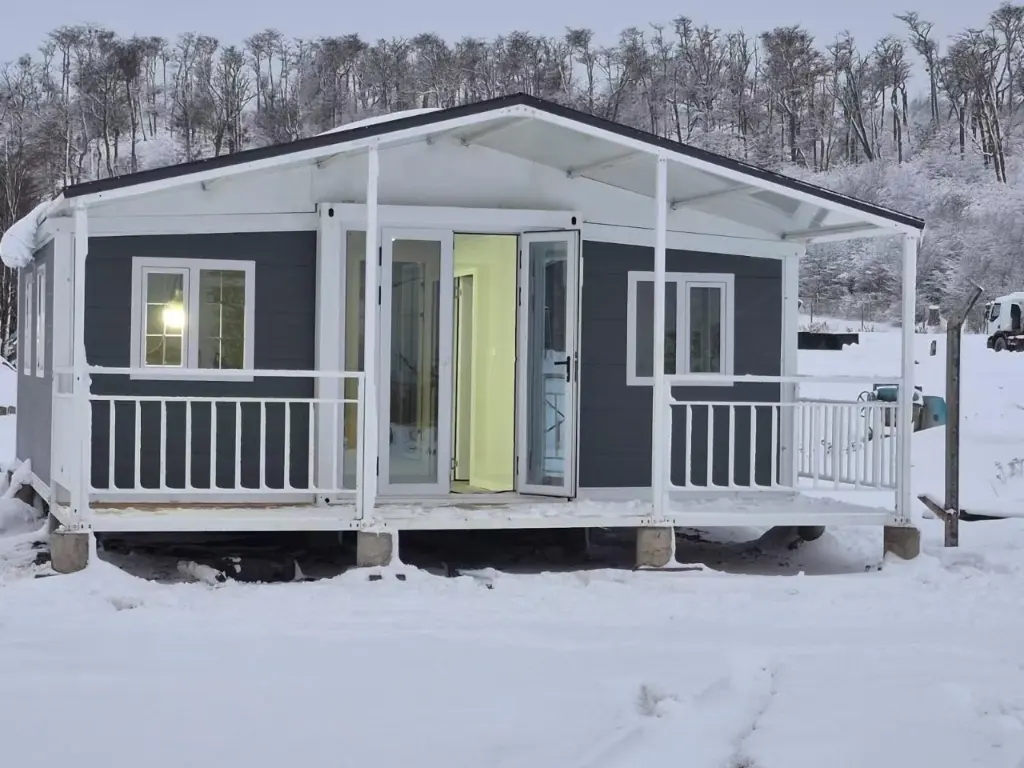
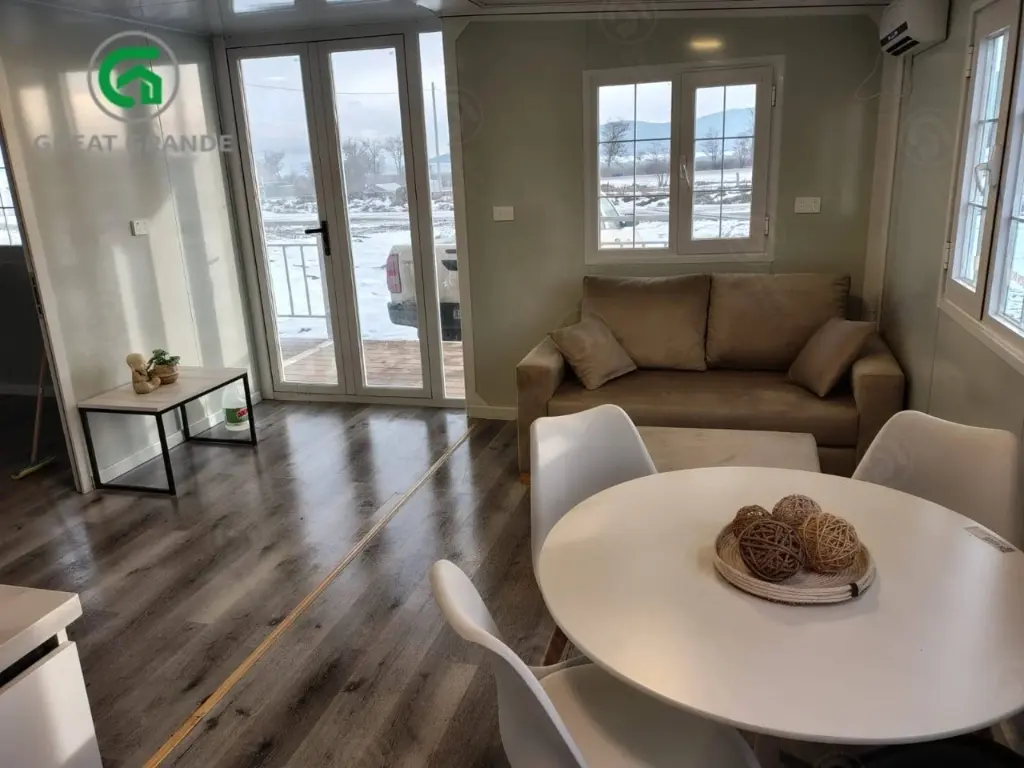
Feuchtigkeitskontrolle und Kondensationsverhinderung
In kalten Klimazonen ist die Vermeidung von Feuchtigkeitsansammlungen und Kondensation im Containerhaus entscheidend für ein trockenes und gesundes Wohnklima. Grande Fertighäuser verfügen dank der EPS-Sandwichplattenkonstruktion über eine wirksame Feuchtigkeitsbarriere, die für ein trockenes Raumklima sorgt.
Die getrennte Badezimmeraufteilung, bei der der Nassbereich (Duschbereich) vom Trockenbereich (Toilette und Waschbecken) getrennt ist, ist ein innovatives Designmerkmal, das die Feuchtigkeitsbildung in anderen Bereichen des Hauses reduziert. Diese Trennung erhöht nicht nur den Wohnkomfort, sondern beugt auch Problemen wie Schimmelbildung und Fäulnis vor, die bei feuchten Winterbedingungen häufiger auftreten können.
Darüber hinaus wird durch eine gute Isolierung das Risiko der Kondensation an Fenstern und Wänden minimiert. Dies ist besonders wichtig in Bereichen mit starken Temperaturschwankungen zwischen Innen- und Außenbereich.
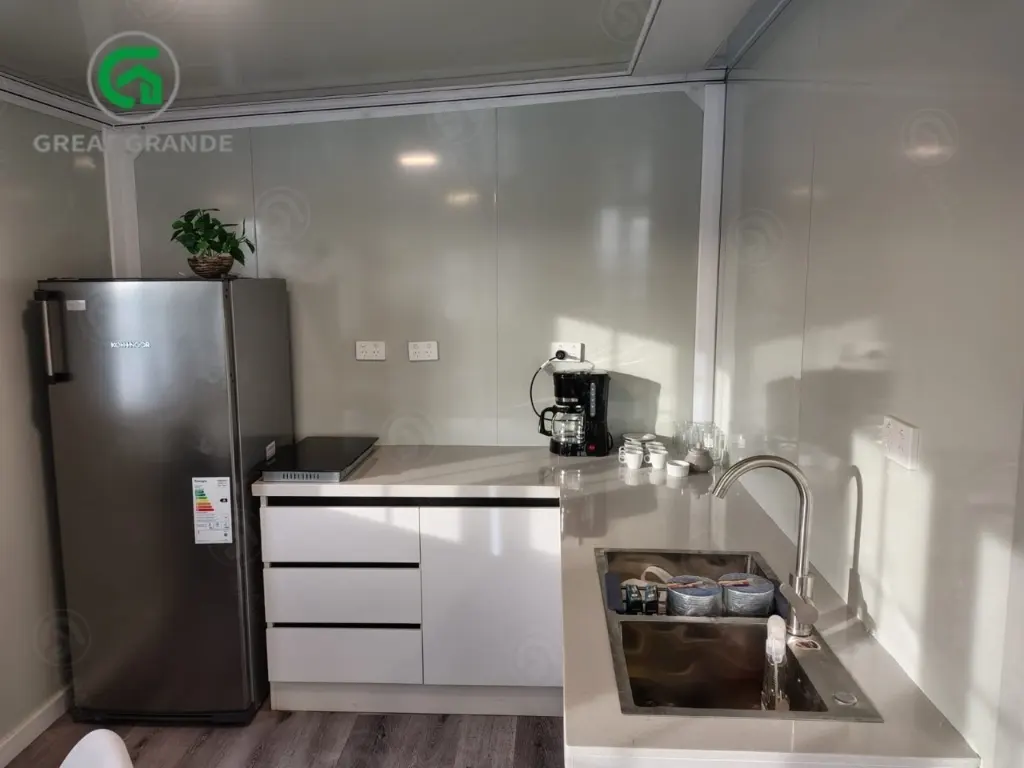
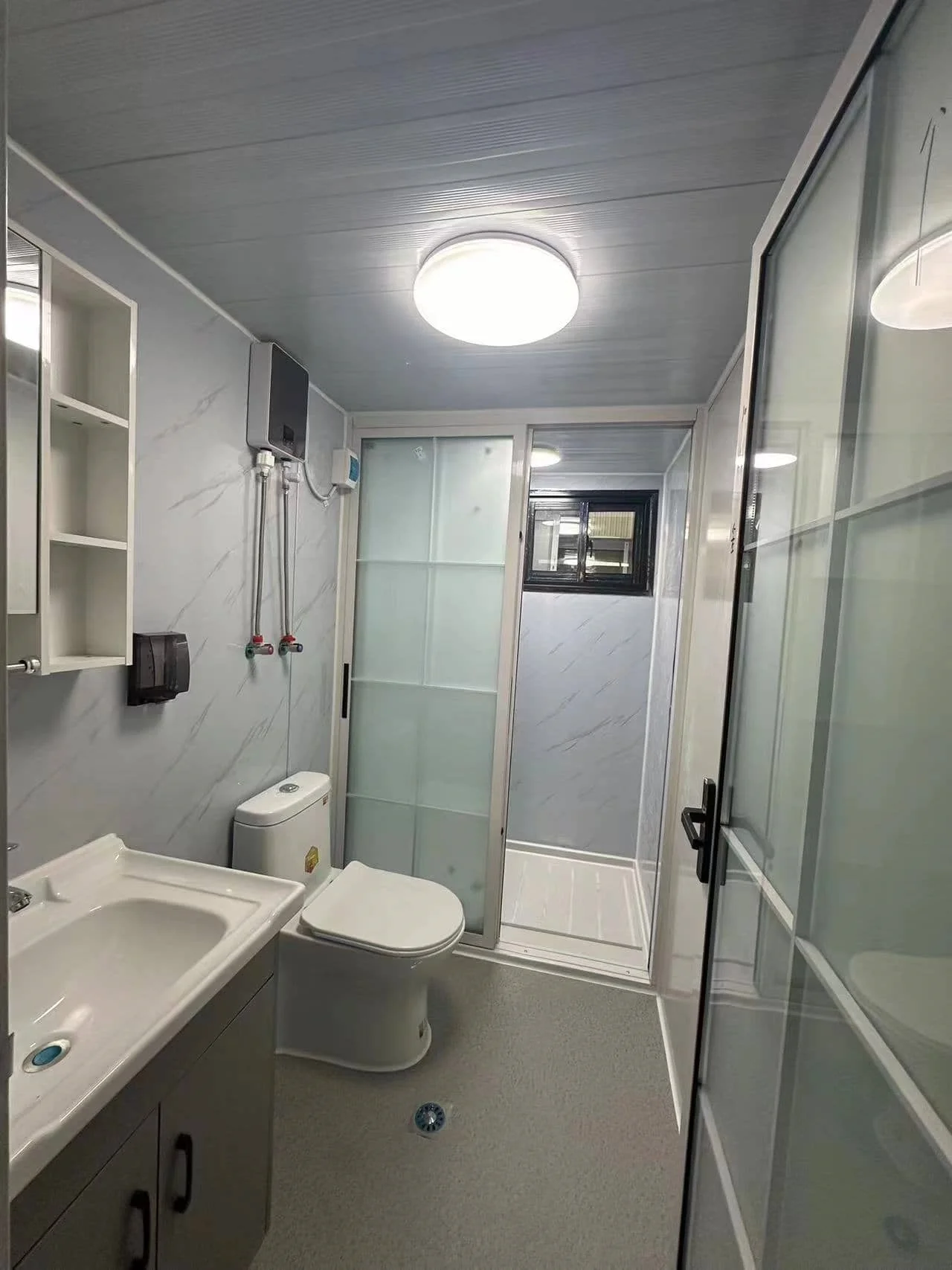
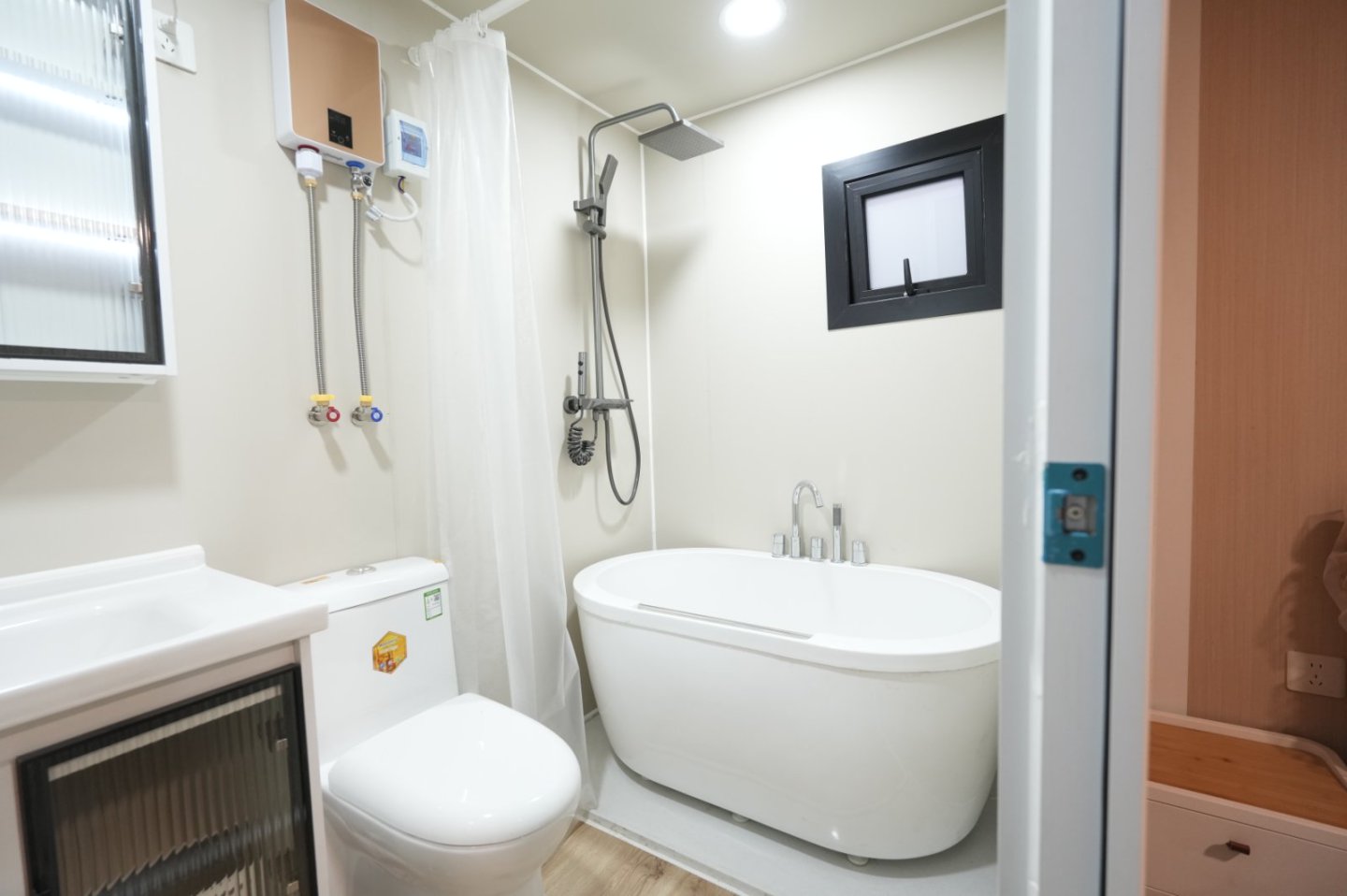
Belüftung und Luftstrom
Während die Isolierung der Schlüssel zum Erhalt der Wärme ist, ist eine ausreichende Belüftung ebenso wichtig, um abgestandene Luft und Kondensation zu vermeiden. Die Grande Fertighaus zum Zusammenklappen Die großen Glasschiebetüren, breiten Fenster und kleineren Seitenfenster sorgen für maximales Tageslicht und optimale Belüftung. Im Winter ermöglichen diese Fenster eine optimale Luftzirkulation und reduzieren die Luftfeuchtigkeit im Raum, ohne die Wärme zu verlieren.
Für eine effektivere Belüftung im Winter kann die Installation mechanischer Lüftungssysteme wie eines HRV-Systems (Heat Recovery Ventilation) oder ERV-Systems (Energy Recovery Ventilation) eine gute Option sein. Diese Systeme sorgen für die Zirkulation frischer Luft und gewinnen gleichzeitig Wärme aus der Abluft zurück. So wird eine angenehme Innentemperatur ohne nennenswerten Energieverlust aufrechterhalten.
Strukturelle Integrität und Wetterbeständigkeit
Fertighäuser müssen extremen Wetterbedingungen standhalten, insbesondere im Winter, wenn Schnee, Eis und Minusgrade die Konstruktion stark beeinträchtigen können. Das vorgefertigte Falthaus Grande ist auf extreme Wetterbeständigkeit ausgelegt. Es wurde auf Erdbeben der Stärke 8,0 und Winddruck der Stufe 17 getestet und hält so selbst den härtesten Winterstürmen stand.
Darüber hinaus besteht der Rahmen aus 2,5 mm starken verzinkten Stahlrohren, die selbst in feuchter, schneereicher Umgebung für robusten Halt sorgen und Rostbildung vorbeugen. Dies garantiert, dass Ihr Haus jahrelang strukturell stabil bleibt und kaum bis gar keine Wartung erforderlich ist.
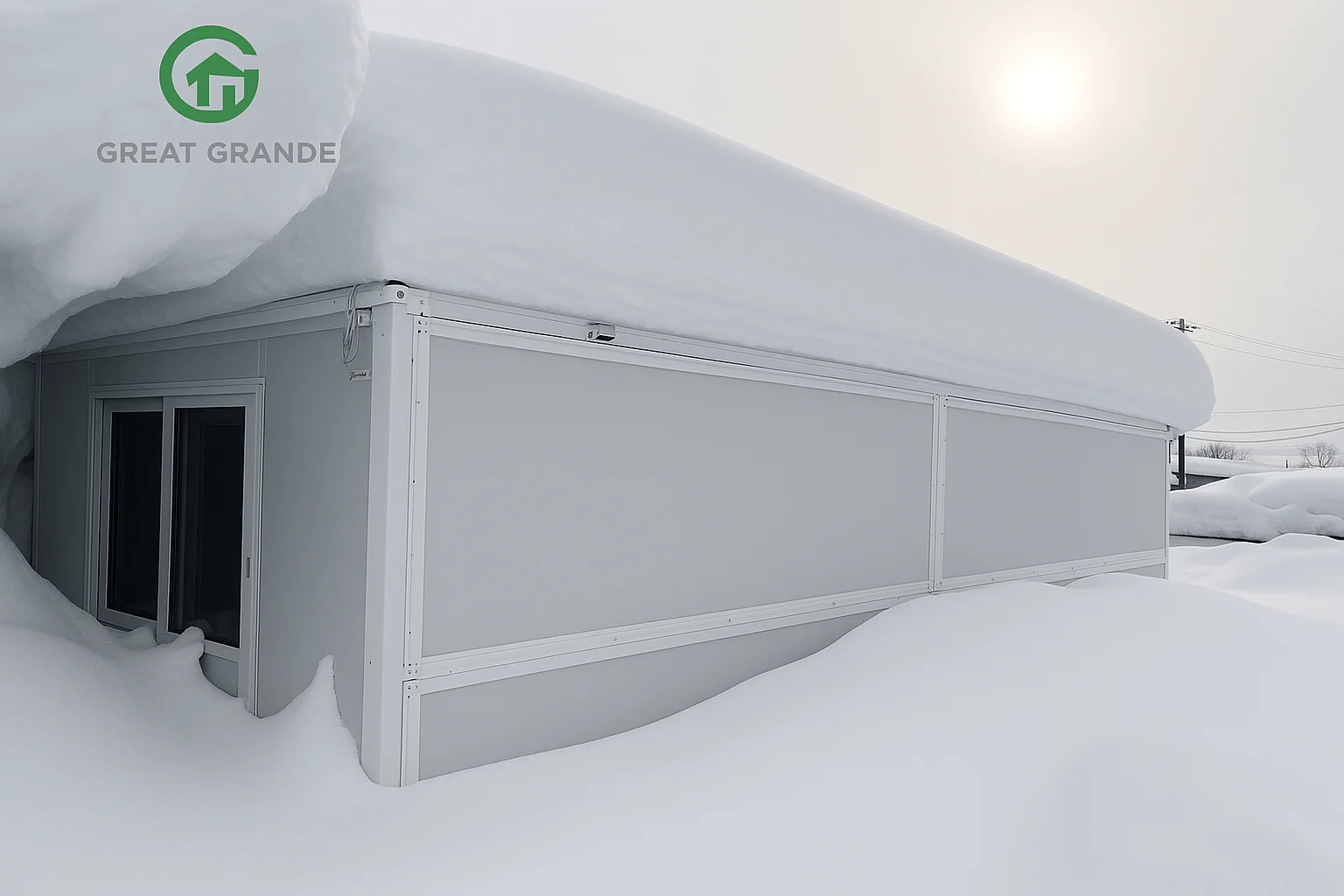
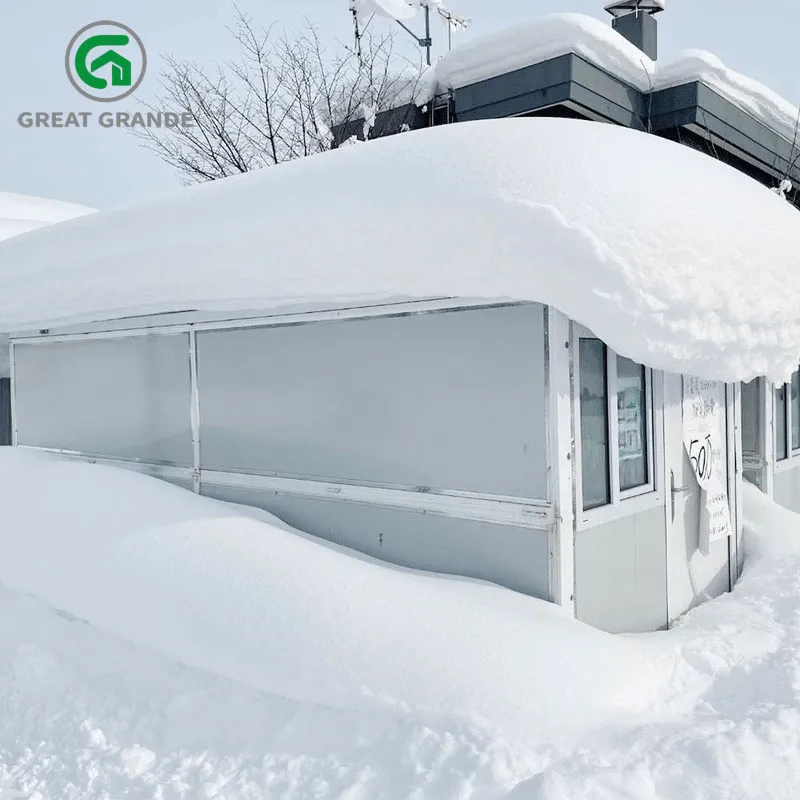
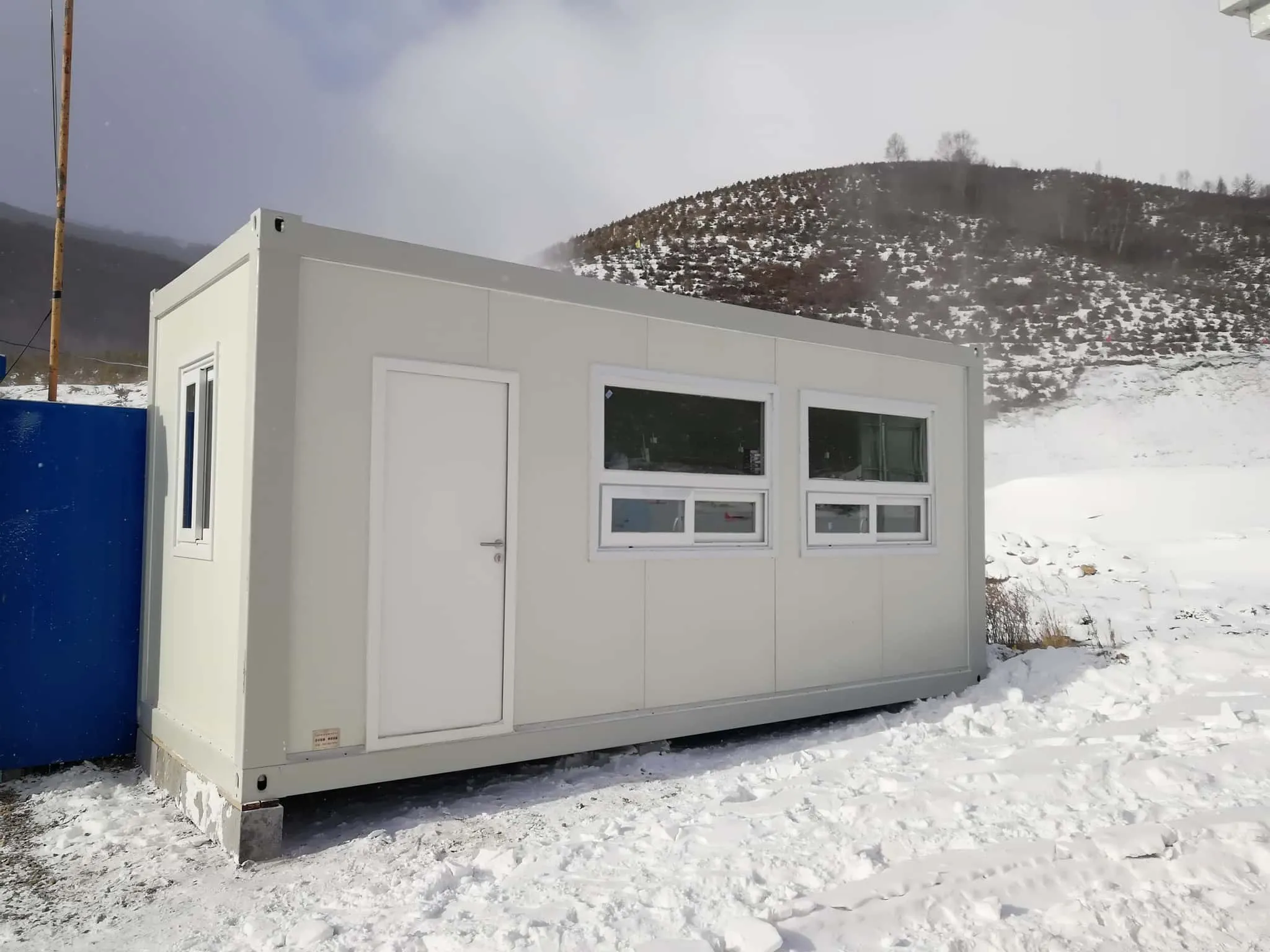
Auswahl von Türen und Fenstern für die Winterbeständigkeit
Bei der Auswahl eines Fertighauses für den Winter ist die Qualität der Türen und Fenster entscheidend, um Wärmeverlust zu vermeiden. Das Falthaus Grande ist mit Kunststoff-Stahl-Fenstern und einer Sicherheitstür aus Stahl ausgestattet, die beide auf Langlebigkeit und Isolierung ausgelegt sind.
Die Fenster sind doppelt verglast, bieten eine hervorragende Wärmeeffizienz und reduzieren das Risiko von Wärmeverlust. Die Sicherheitstür aus Stahl trägt nicht nur zur allgemeinen Sicherheit des Hauses bei, sondern bietet auch zusätzlichen Schutz vor kalter Zugluft.
Für noch mehr Winterfestigkeit können Sie auch Fenster mit Low-E-Beschichtungen (Low-E) wählen, die die Wärme zurück in den Innenraum reflektieren und so die Energieeffizienz weiter verbessern.
Abschluss
In kälteren Klimazonen ist die Wahl eines vorgefertigtes faltbares Containerhaus spielt eine entscheidende Rolle für Komfort, Energieeffizienz und Sicherheit in den Wintermonaten. Das vorgefertigte Falthaus Grande ist eine hervorragende Option und bietet hervorragende Isolierung, Energiesparfunktionen, strukturelle Haltbarkeit und ein praktisches Design für Feuchtigkeitskontrolle und Belüftung. Ob als Notunterkunft, Arbeiterwohnheim oder zu Wohnzwecken – es erfüllt die Anforderungen des Winterlebens und ist die ideale Wahl für alle, die eine schnelle, kostengünstige und effiziente Wohnlösung suchen.

